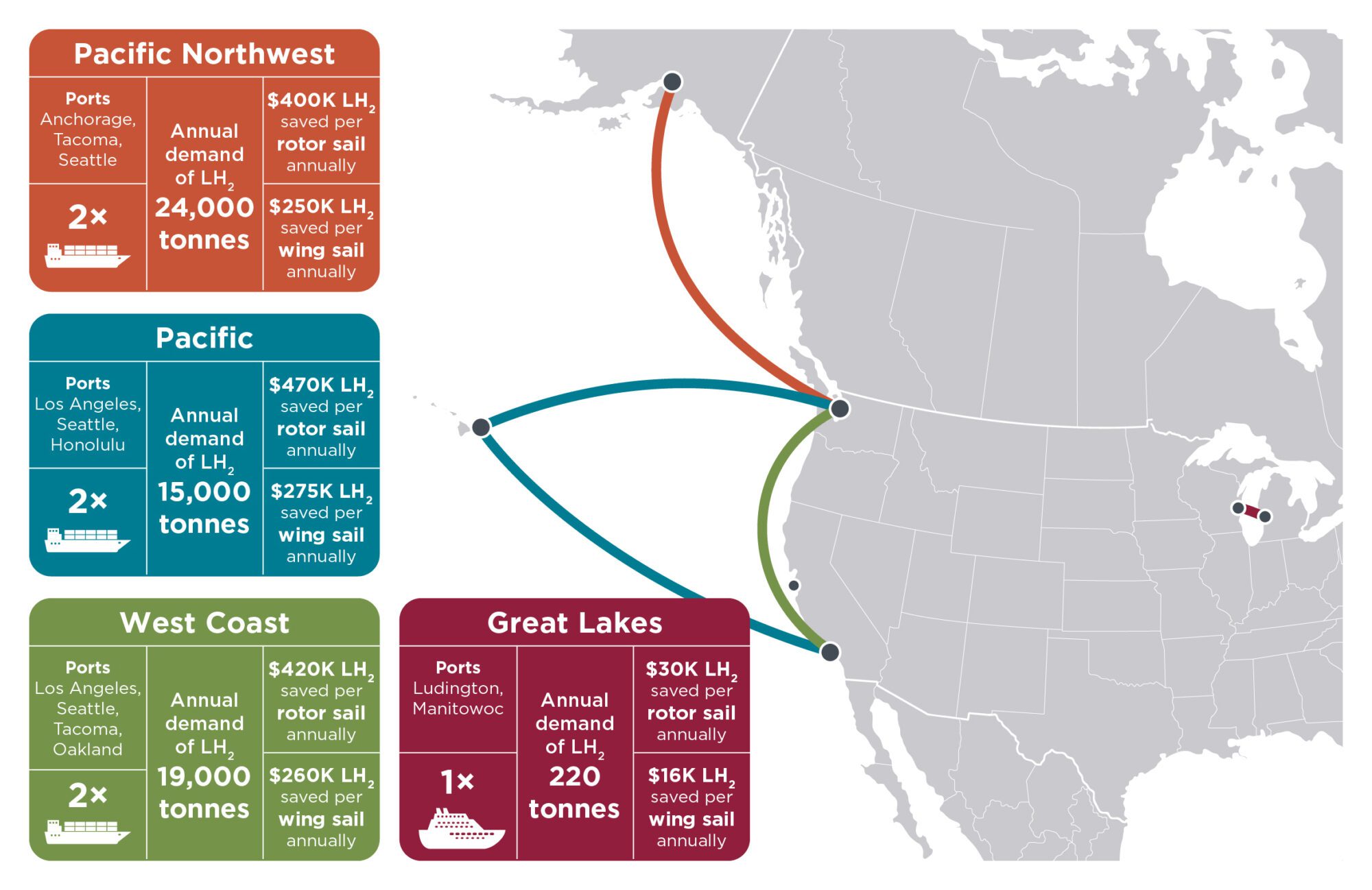Decarbonizing the US domestic fleet: The future of the Jones Act
White paper
Jones Act shipping case studies: Feasibility of U.S. domestic green corridors with hydrogen and wind assist
The United States, like other major economies, enforces cabotage rules through the Jones Act, requiring domestic shipping between ports to use U.S.-flagged vessels and follow U.S. environmental standards. The Biden administration’s focus on climate action includes increased funding for zero-emission port infrastructure. This study examines four aging Jones Act vessels and their potential to operate routes using renewable liquid hydrogen. It also evaluates two wind-assisted technologies, rigid wing sails and rotor sails, to determine their fuel savings capabilities.
The analysis identifies four key Jones Act corridors—the Pacific Northwest, West Coast, Pacific, and the Great Lakes—and presents opportunities for zero-emission vessel projects and collaboration with local hydrogen producers. Our key findings highlight that these four vessels could complete 99% of their routes using liquid hydrogen. Rotor sails are variable in performance based on route, heading, speed, and season, while wing sails consistently generate net positive energy. Wind-assisted propulsion offers significant annual fuel cost savings, particularly on Pacific routes and the Great Lakes.

ID 36 – Jones Act, white paper, letter, 60036 v8
Figure ES.1. A summary of four proposed corridors’ liquid hydrogen demands and annual fuel savings provided by wind-assist technologies
